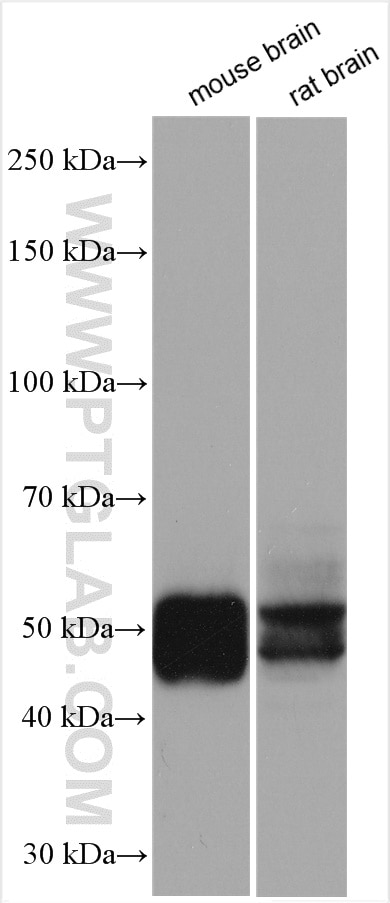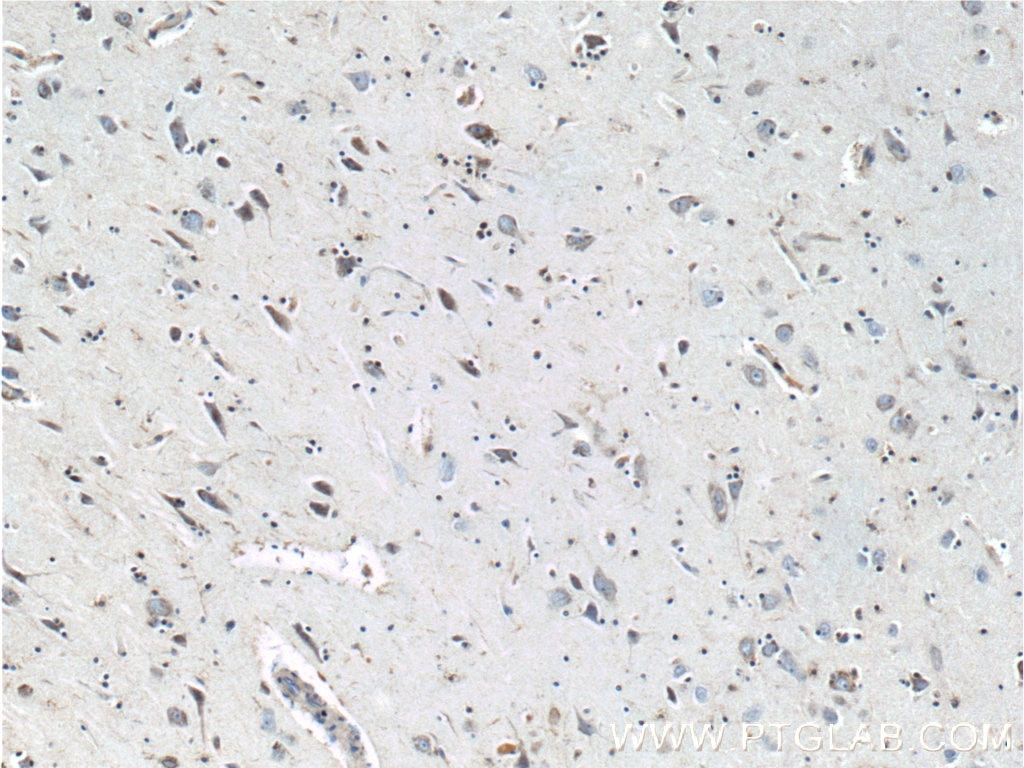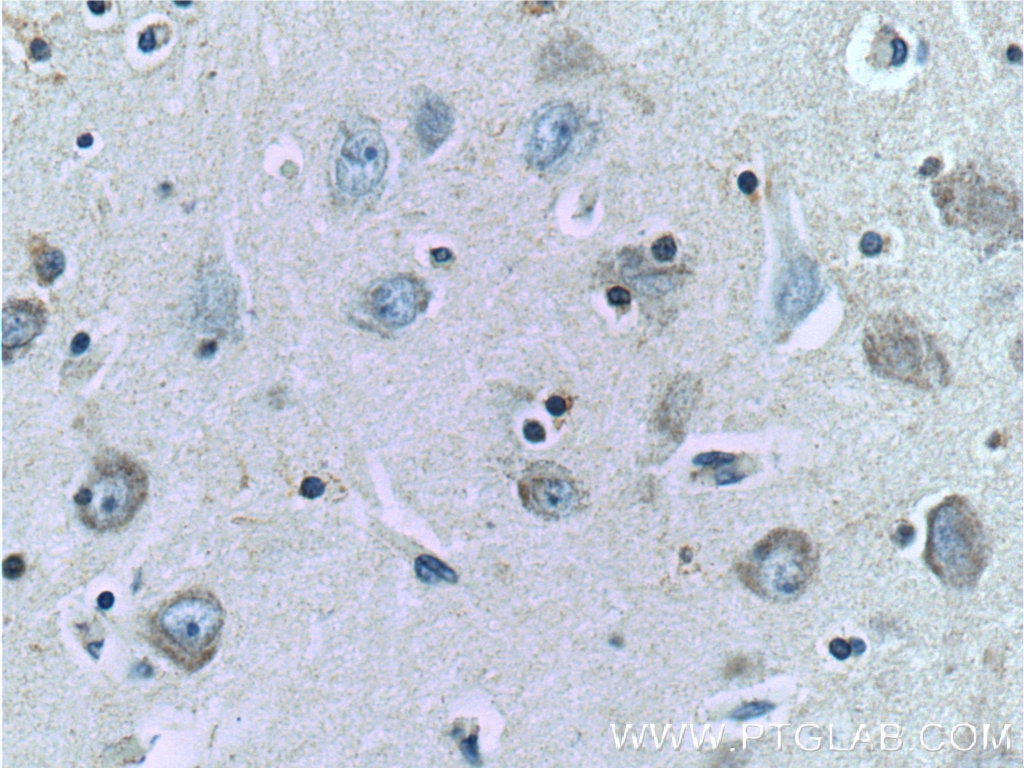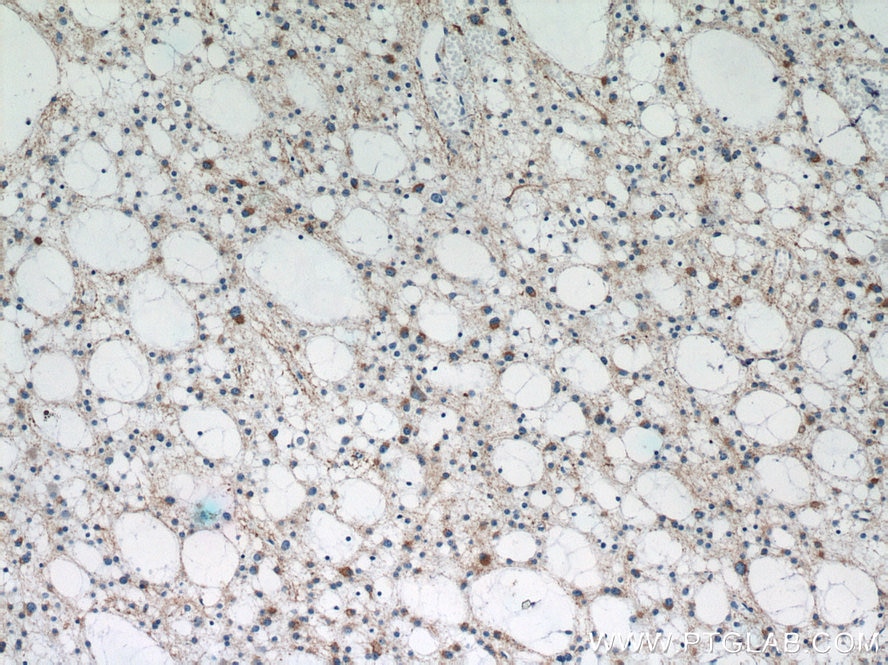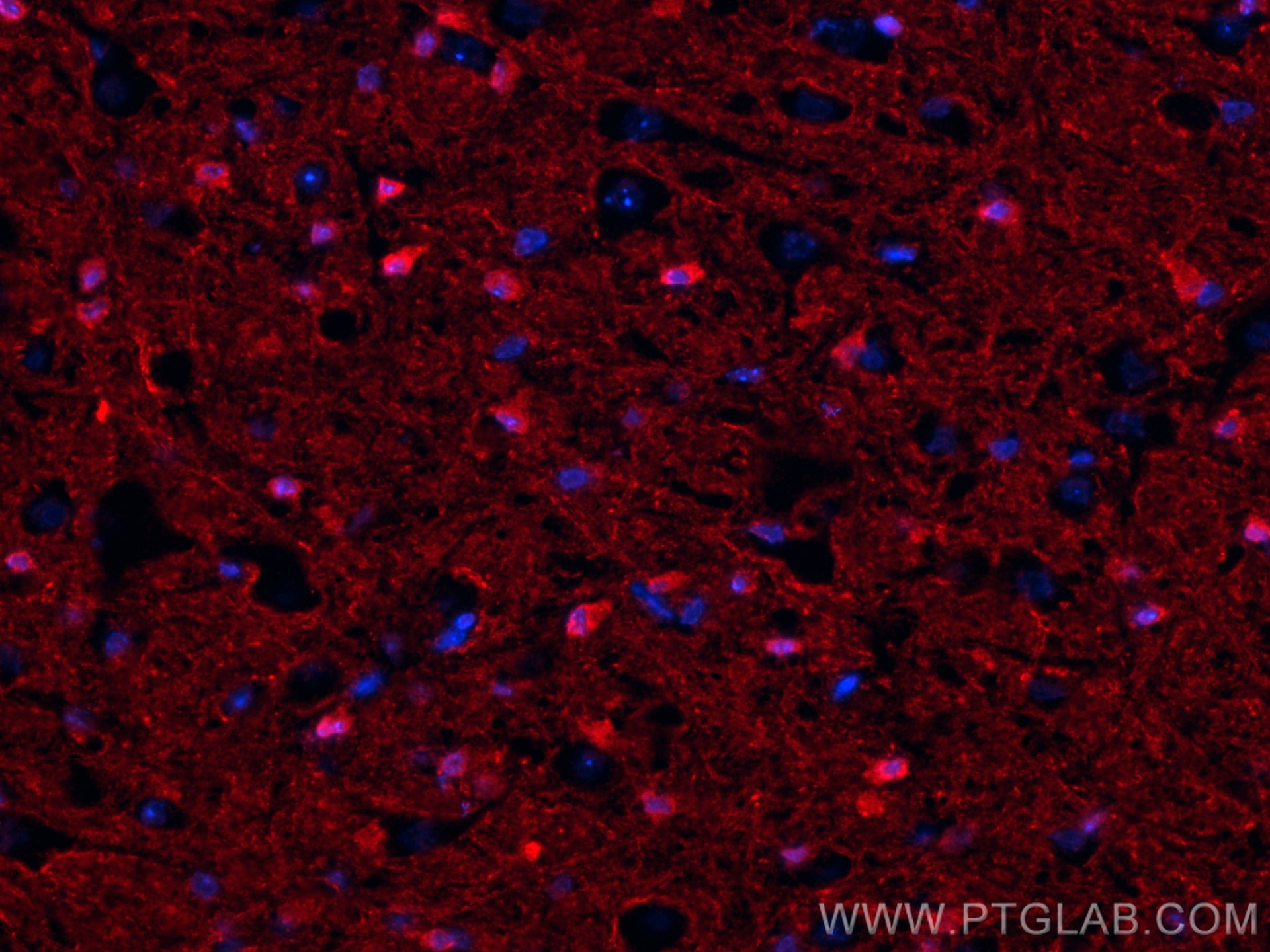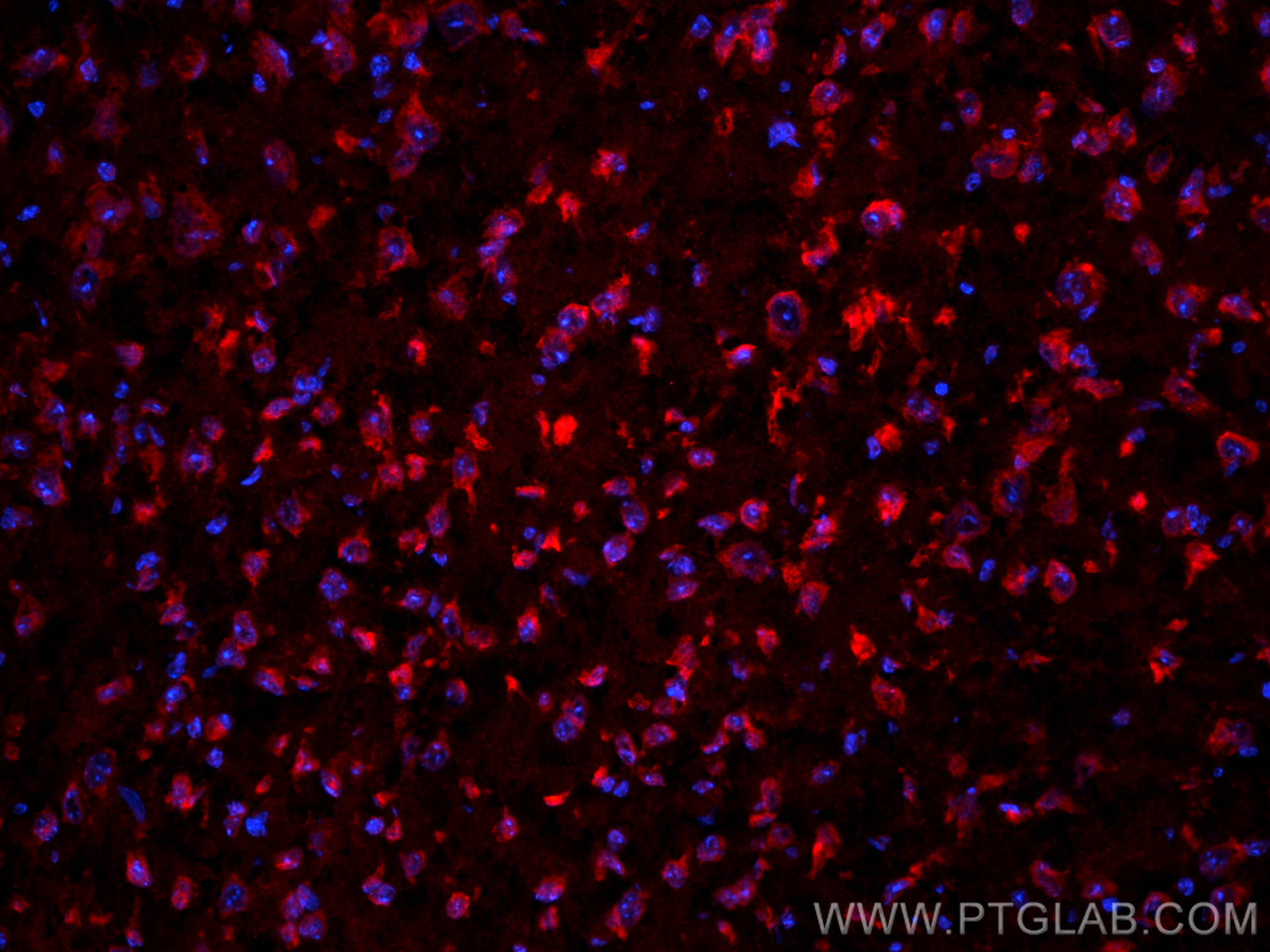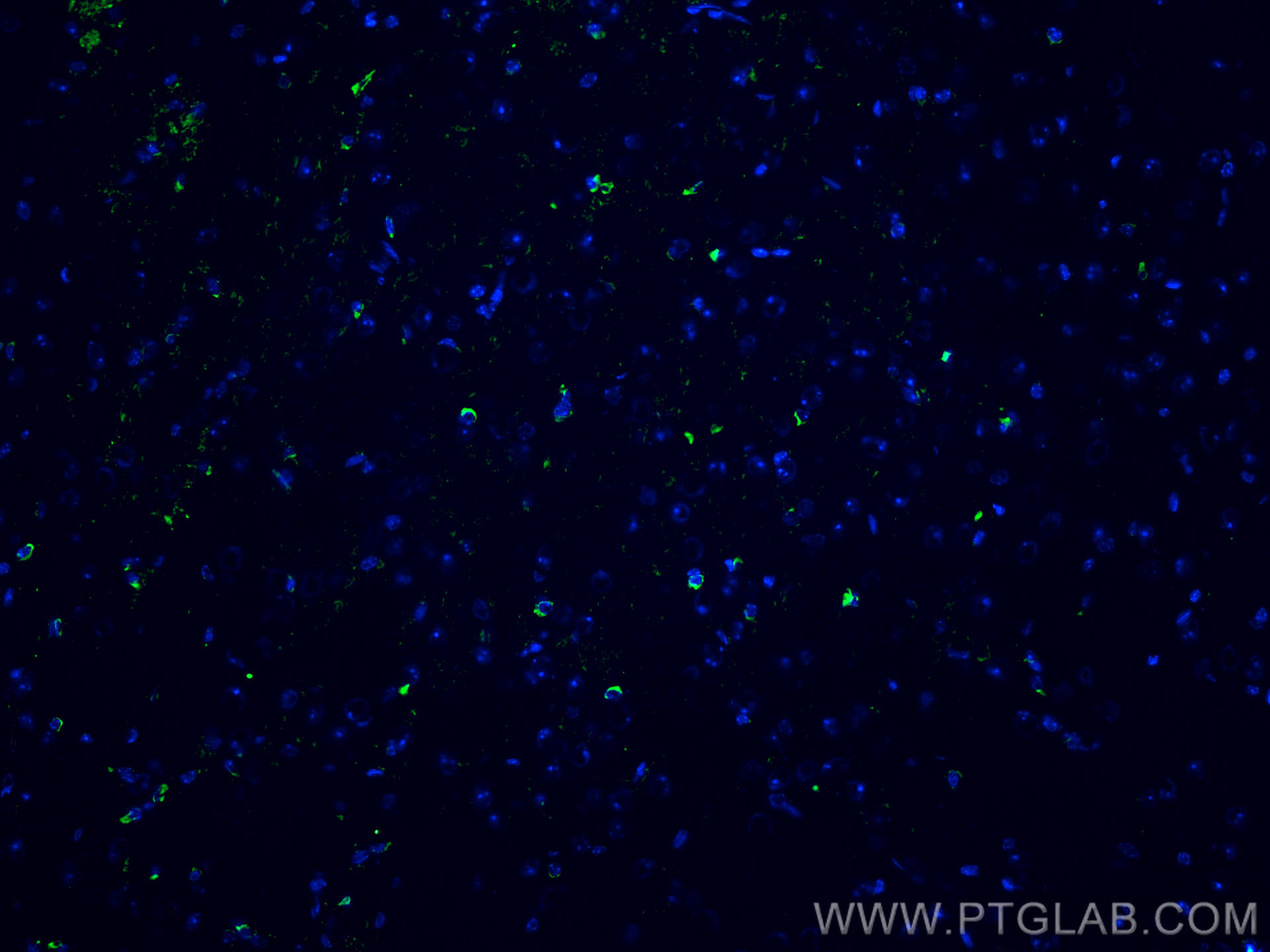Tested Applications
| Positive WB detected in | mouse brain tissue, rat brain |
| Positive IHC detected in | human brain tissue, human gliomas tissue Note: suggested antigen retrieval with TE buffer pH 9.0; (*) Alternatively, antigen retrieval may be performed with citrate buffer pH 6.0 |
| Positive IF-P detected in | mouse brain tissue |
| Positive IF-Fro detected in | mouse brain tissue |
Recommended dilution
| Application | Dilution |
|---|---|
| Western Blot (WB) | WB : 1:2000-1:12000 |
| Immunohistochemistry (IHC) | IHC : 1:20-1:200 |
| Immunofluorescence (IF)-P | IF-P : 1:50-1:500 |
| Immunofluorescence (IF)-FRO | IF-FRO : 1:50-1:500 |
| It is recommended that this reagent should be titrated in each testing system to obtain optimal results. | |
| Sample-dependent, Check data in validation data gallery. | |
Published Applications
| WB | See 42 publications below |
| IHC | See 4 publications below |
| IF | See 11 publications below |
Product Information
10274-1-AP targets TAU in WB, IHC, IF-P, IF-Fro, ELISA applications and shows reactivity with human, mouse, rat samples.
| Tested Reactivity | human, mouse, rat |
| Cited Reactivity | human, mouse, rat, goat |
| Host / Isotype | Rabbit / IgG |
| Class | Polyclonal |
| Type | Antibody |
| Immunogen |
CatNo: Ag0354 Product name: Recombinant human TAU protein Source: e coli.-derived, PGEX-4T Tag: GST Domain: 5-208 aa of BC000558 Sequence: PRQEFEVMEDHAGTYGLGDRKDQGGYTMHQDQEGDTDAGLKAEEAGIGDTPSLEDEAAGHVTQARMVSKSKDGTGSDDKKAKGADGKTKIATPRGAAPPGQKGQANATRIPAKTPPAPKTPPSSGEPPKSGDRSGYSSPGSPGTPGSRSRTPSLPTPPTREPKKVAVVRTPPKSPSSAKSRLQTAPVPMPDLKNVKSKIGSTENL Predict reactive species |
| Full Name | microtubule-associated protein tau |
| Calculated Molecular Weight | 37-46, 79-81 kDa |
| Observed Molecular Weight | 45-70 kDa, 100 kDa |
| GenBank Accession Number | BC000558 |
| Gene Symbol | TAU |
| Gene ID (NCBI) | 4137 |
| RRID | AB_2139718 |
| Conjugate | Unconjugated |
| Form | Liquid |
| Purification Method | Antigen affinity purification |
| UNIPROT ID | P10636 |
| Storage Buffer | PBS with 0.02% sodium azide and 50% glycerol, pH 7.3. |
| Storage Conditions | Store at -20°C. Stable for one year after shipment. Aliquoting is unnecessary for -20oC storage. 20ul sizes contain 0.1% BSA. |
Background Information
Tau (tubulin-associated unit) is a microtubule-associated protein (also known as MAPT), expressed mainly in neurons of the central nervous system. Its primary function is to modulate microtubule dynamics for maintaining axonal cytoskeleton. Various isoforms of Tau exist due to the alternative splicing, and short isoforms around 45-69 kDa and long isoforms around 100-110 kDa have been reported in different literature (8752131,15965697). Present polyclonal anti-Tau antibody was produced by immunizing animals with N-terminal of Tau and can detect approx 45-70 kDa and 100-kDa bands in brain tissues.
Protocols
| Product Specific Protocols | |
|---|---|
| IF protocol for TAU antibody 10274-1-AP | Download protocol |
| IHC protocol for TAU antibody 10274-1-AP | Download protocol |
| WB protocol for TAU antibody 10274-1-AP | Download protocol |
| Standard Protocols | |
|---|---|
| Click here to view our Standard Protocols |
Publications
| Species | Application | Title |
|---|---|---|
Cell Res Tau is a receptor with low affinity for glucocorticoids and is required for glucocorticoid-induced bone loss | ||
Sci Adv Oligodendroglial glycolytic stress triggers inflammasome activation and neuropathology in Alzheimer's disease. | ||
Hum Mol Genet Parkin deletion causes cerebral and systemic amyloidosis in human mutated tau over-expressing mice. | ||
Acta Neuropathol Commun Laterality and region-specific tau phosphorylation correlate with PTSD-related behavioral traits in rats exposed to repetitive low-level blast. | ||
Free Radic Biol Med The neuroprotective effects of phosphocreatine on amyloid beta 25-35-induced differentiated neuronal cell death through inhibition of AKT/GSK-3β /Tau/APP/CDK5 pathways in vivo and vitro |
Reviews
The reviews below have been submitted by verified Proteintech customers who received an incentive for providing their feedback.
FH manohar (Verified Customer) (03-06-2024) |
|
FH David (Verified Customer) (01-02-2024) | Produces a single band at around 45kDa which is concordant with the data sheet.
|
FH Tanusree (Verified Customer) (02-14-2019) | The antibody worked well with the mouse primary cells and tissue.
|

